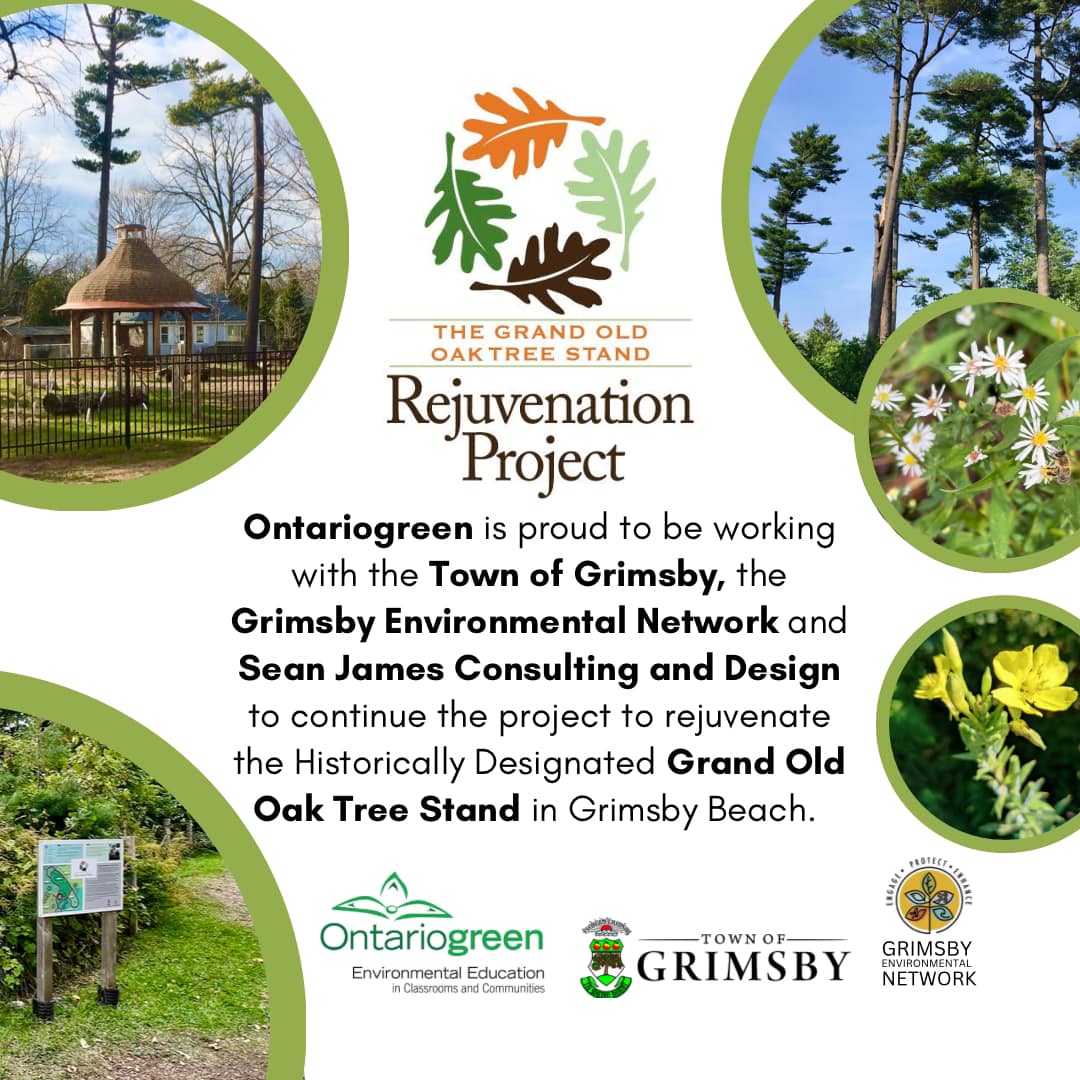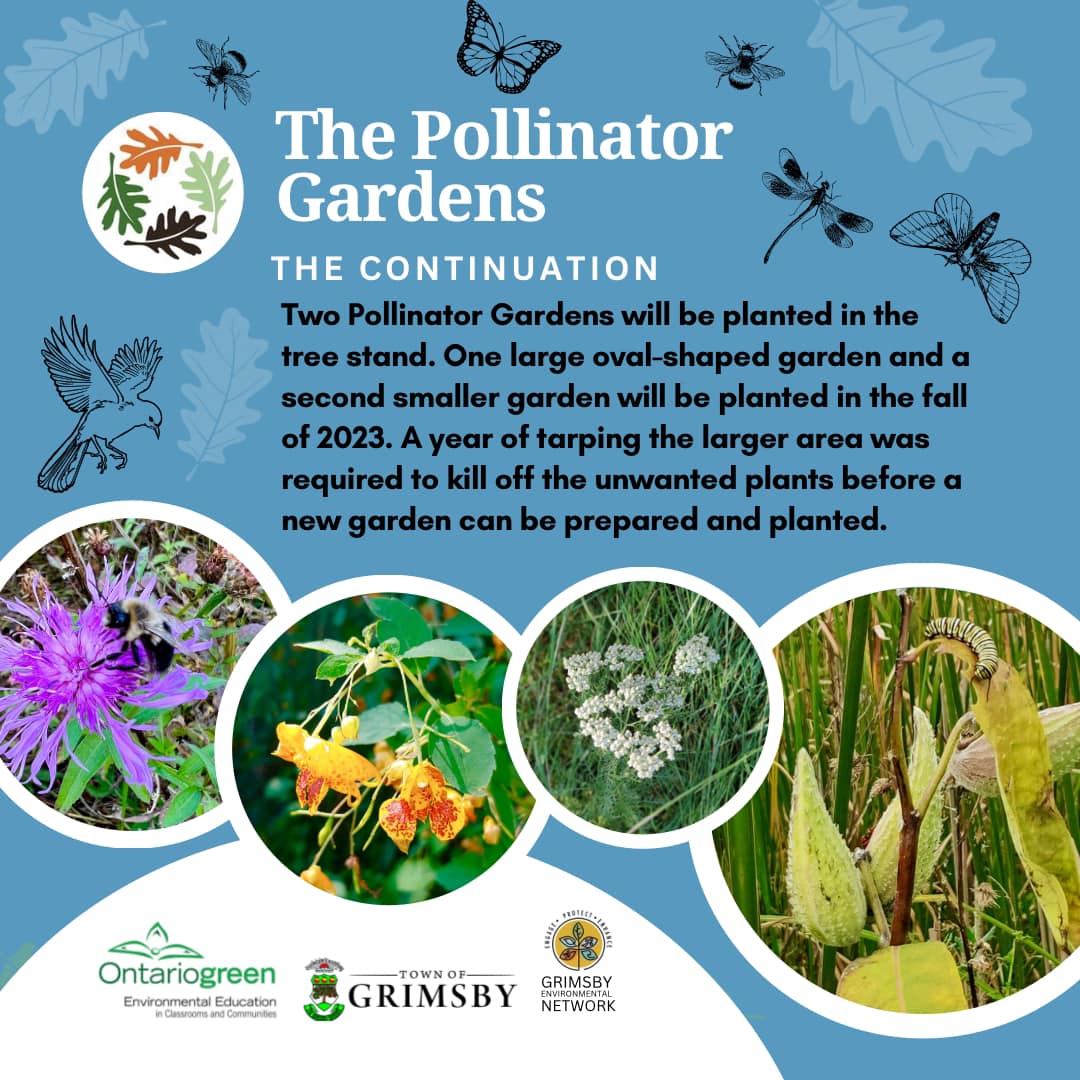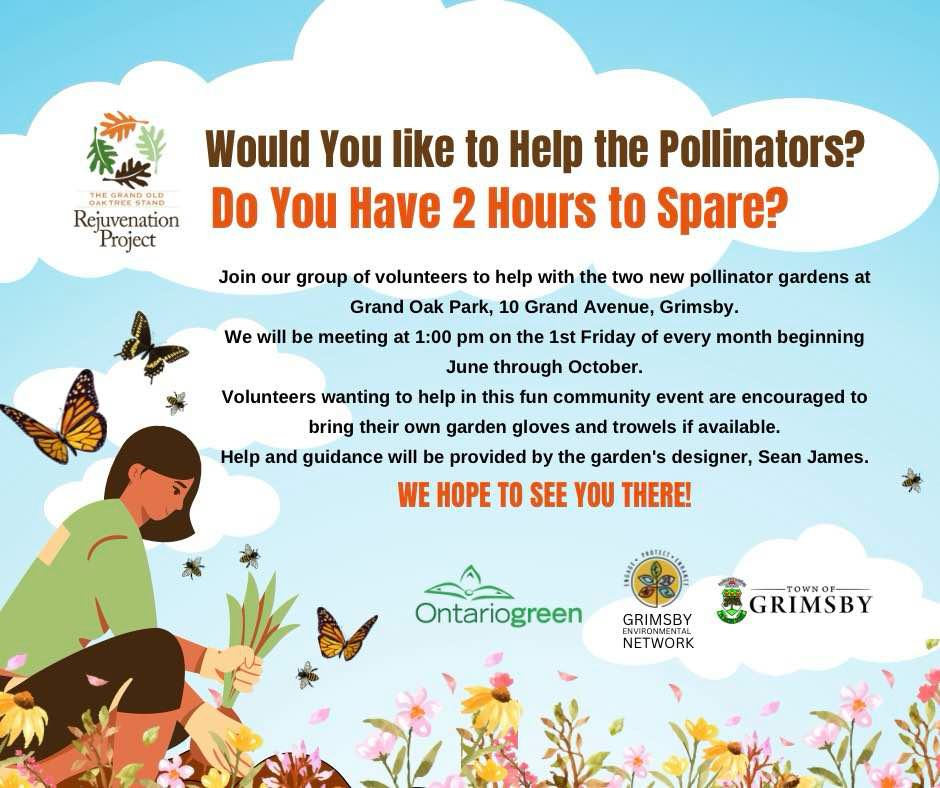Two pollinator gardens have been planted at the Grand Old White Oak Tree Stand. One is a large sunny garden that can be found following the path to the right of the entrance. The other, a small shade garden planted around a stump of a White Oak, can be found in the southwest corner of the garden. Both are intended to support local biodiversity, beautify the park and help the community learn more about the value of native plants.
The native plants selected for the pollinator gardens were chosen not only for their ability to feed bees, butterflies, beetles, moths and other pollinators but also because they are host plants for their larvae. For example, New York Ironweed (Vernonia noveboracensis) feeds the caterpillars of the Crossline Skipper and American Painted Lady Butterfly. Native Goldenrods, like the Early Goldenrod (Solidago juncea) that you can find in the garden, are the host plant for 115 species of moths and butterflies. The larvae of insects, in turn, feed the nestlings of birds.
Other plants, like Switch Grass (Panicum virgatum), besides being host plants, also create seeds that feed birds and provide material for nest building. Vines, like Virgin’s Bower (Clematis virginiana) attract Hummingbirds.
Low growing native evergreens like Creeping Juniper, are host plants, prevent erosion, and feed a wide variety of birds with their berries and seeds.
The larger pollinator garden also contains two native trees that were already on the site when the garden was planted. The decision was made not to remove them because Red Oak and the Bitternut Hickory are both valuable trees for biodiversity as host plants and as food provided by their acorns and nuts. This means the garden and its plants will change overtime as more shade develops.
More information on the native plants that can currently be found in the garden is below:
Evergreens/Conifers
| Botanical Name |
Common Name |
| Juniperus horizontalis |
Creeping Juniper |
Perennials
| Botanical Name |
Common Name |
| Achillea millefolium |
Common Yarrow |
| Agastache foeniculum |
Anise Hyssop |
| Anemone virginiana |
Thimbleweed |
| Aquilegia canadensis |
Wild Columbine |
| Asclepias incarnata |
Swamp Milkweed |
| Asclepias tuberosa |
Butterfly Milkweed |
| Caltha palustris |
Marsh Marigold |
| Coreopsis lancelata |
Lance-leaved Tickseed |
| Echinacea pallida |
Pale Purple Coneflower |
| Eutrochium maculatum |
Joe-Pye Weed |
| Fragaria virginica |
Wild Srawberry |
| Gaillardia aristata |
Blanket Flower |
| Geranium maculatum |
Wild Geranium |
| Geum triflorum |
Prarie Smoke |
| Iris versicolor |
Blue Flag |
| Lobelia siphilitica |
Great Blue Lobelia |
| Lupinus perennis |
Wild Lupin |
| Mertensia virginica |
Virginia Bluebells |
| Monarda didyma |
Scarlet Beebalm, Oswega Tes, Red Bergamot |
| Monarda punctata |
Spotted Beebalm, Horsemint |
| Penstemon digitalis |
Foxglove Beardtongue |
| Prunella vulagries |
Healall |
| Pulsatilla vulgaris |
Windflower |
| Pycnanthemum virginianum |
Virginia Mountain Mint |
| Rudbeckia hirta |
Brown-eyed Susan |
| Silphium laciniatum |
Compass Plant |
| Sanguinaria canadensis |
Bloodrot |
| Solidago juncea |
Early Goldenrod |
| Symphyotrichum oolentangiensis |
Sky Blue Aster |
| Vernonia noveboracensis |
New York Ironweed |
| Verbena stricta |
Hoary Vervain |
| Viola canadense |
Canadian Violet |
Grasses and Grass-Like Plants
| Botanical Name |
Common Name |
| Panicum virgatum |
Switch Grass |
| Sorghastrum nutans 'Sioux Blue' |
Sioux Blue Indian Grass |
| Sporobolud heterolepsis |
Prairie Dropseed |
Bulbs and Corns
| Botanical Name |
Common Name |
| Allium cernuum |
Nodding Onion |
Vines and Espalier
| Botanical Name |
Common Name |
| Clematis virginiana |
Virgin's Bower |

 The Grand Avenue Tree Stand is a designated cultural heritage resource under Section IV of the Ontario Heritage Act and includes the significant white oaks reflective of the area. Historically, the area was considered an ideal gathering place for its scenic beauty and the variety of mature trees which provided shade. Many of those trees can be found today in the original settlement areas, lots and park spaces and help to define the unique character of the Grimsby Beach community today.
The Grand Avenue Tree Stand is a designated cultural heritage resource under Section IV of the Ontario Heritage Act and includes the significant white oaks reflective of the area. Historically, the area was considered an ideal gathering place for its scenic beauty and the variety of mature trees which provided shade. Many of those trees can be found today in the original settlement areas, lots and park spaces and help to define the unique character of the Grimsby Beach community today.

































